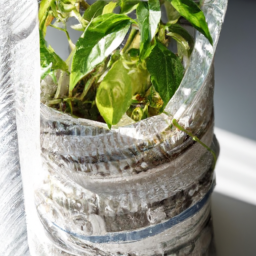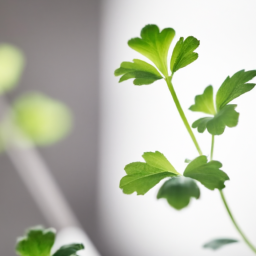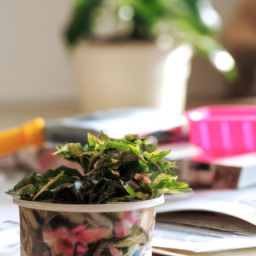
Are you looking to add some greenery to your indoor space? Growing indoor plants is a great way to bring nature indoors and liven up your home or office. Whether you have a green thumb or are a beginner in the world of gardening, there are plenty of indoor plants that are easy to care for and can thrive in a variety of environments. In this blog post, we will explore the benefits of growing indoor plants, as well as provide tips and tricks for successfully caring for your indoor green friends. So, grab your watering can and let’s dive into the wonderful world of indoor gardening!
Benefits of Growing Indoor Plants
Improved Air Quality
When it comes to the benefits of growing indoor plants, one of the most significant advantages is the improvement in air quality. Plants have the amazing ability to absorb carbon dioxide and release oxygen through the process of photosynthesis. This means that having indoor plants can help to increase the oxygen levels in your home, making the air fresher and cleaner to breathe. In addition, plants can also help to remove harmful toxins from the air, such as formaldehyde and benzene, which are commonly found in indoor environments. This can lead to a healthier living space and reduce the risk of respiratory issues and other health problems.
Another way in which indoor plants can improve air quality is by increasing humidity levels. Plants release water vapor through a process called transpiration, which can help to add moisture to the air and prevent it from becoming too dry. This is especially beneficial during the winter months when indoor heating can cause the air to become dry and uncomfortable. By having a variety of indoor plants in your home, you can create a more balanced and healthy indoor environment for you and your family to enjoy.
In addition to improving air quality, indoor plants can also help to reduce noise levels in your home. Plants have the ability to absorb sound waves and reduce echoes, making them an effective natural sound barrier. This can be particularly useful in apartments or homes with high ceilings, where noise can easily bounce off hard surfaces and create a noisy environment. By strategically placing indoor plants throughout your home, you can create a more peaceful and tranquil living space that is conducive to relaxation and concentration.
Enhanced Mental Well-being
In addition to the physical benefits of growing indoor plants, there are also numerous mental and emotional advantages to having greenery in your home. Studies have shown that being surrounded by plants can help to reduce stress, anxiety, and feelings of depression. The presence of indoor plants can create a calming and soothing atmosphere that promotes relaxation and a sense of well-being. This can be especially beneficial for those who live in urban environments or work in high-stress settings, where access to nature may be limited.
Furthermore, caring for indoor plants can also have a positive impact on mental health. The act of nurturing and tending to plants can be therapeutic and rewarding, providing a sense of purpose and accomplishment. Watching your plants grow and flourish can bring a sense of joy and satisfaction, boosting your mood and overall outlook on life. In addition, having indoor plants can help to create a connection to nature and the natural world, which can be grounding and uplifting in today’s fast-paced and technology-driven society.
Another mental benefit of growing indoor plants is the ability to improve concentration and productivity. Studies have shown that having plants in the workplace can help to increase focus and cognitive function, leading to better performance and creativity. By bringing plants into your home office or study space, you can create a more conducive environment for learning and working. The presence of greenery can help to reduce mental fatigue and improve overall cognitive function, making it easier to stay focused and engaged in your tasks.
Enhanced Aesthetic Appeal
One of the most obvious benefits of growing indoor plants is the enhanced aesthetic appeal they can bring to your home. Plants come in a wide variety of shapes, sizes, and colors, making them versatile and customizable decorative elements. Whether you prefer lush, leafy plants or delicate flowering varieties, there is a plant to suit every taste and style. By strategically placing indoor plants throughout your home, you can create a visually appealing and inviting space that reflects your personality and design preferences.
In addition to adding beauty and visual interest, indoor plants can also help to create a sense of warmth and coziness in your home. Plants can soften hard edges and add a touch of nature to indoor spaces, creating a more inviting and welcoming atmosphere. Whether you choose to display plants on shelves, tables, or hanging planters, they can help to create a sense of balance and harmony in your home decor. The presence of greenery can make your living space feel more alive and vibrant, bringing a touch of the outdoors inside.
Furthermore, indoor plants can also serve as focal points and conversation starters in your home. Whether you have a stunning tropical plant or a unique succulent arrangement, plants can draw the eye and spark interest among guests. By incorporating plants into your home decor, you can create a more dynamic and engaging living environment that reflects your personal style and interests. The beauty and versatility of indoor plants make them a wonderful addition to any home, enhancing both the visual appeal and overall ambiance of your living space.
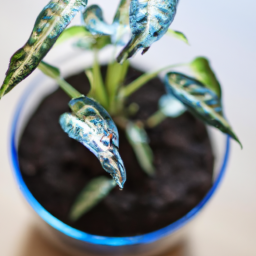
Best Indoor Plants for Beginners
Choosing the Right Plants
When it comes to choosing the best indoor plants for beginners, it’s important to consider a few key factors. First and foremost, think about the amount of light your space receives. Some plants require more sunlight than others, so be sure to choose plants that will thrive in the lighting conditions of your home.
Another important factor to consider is the level of maintenance required. As a beginner, you’ll want to choose plants that are easy to care for and don’t require a lot of attention. Some good options for low-maintenance plants include pothos, spider plants, and snake plants.
Lastly, consider the size of the plant and how much space you have available. If you’re limited on space, opt for smaller plants that can be placed on a shelf or table. Larger plants like fiddle leaf figs or rubber plants are great for filling empty corners or larger rooms.
Caring for Your Plants
Once you’ve chosen the perfect indoor plants for your space, it’s important to know how to care for them properly. The key to keeping your plants healthy and thriving is to provide them with the right amount of water, sunlight, and nutrients.
Watering is one of the most important aspects of plant care. Overwatering can lead to root rot, while underwatering can cause your plants to wilt and die. Be sure to water your plants when the top inch of soil is dry, and always use room temperature water to avoid shocking the roots.
In terms of sunlight, most indoor plants prefer bright, indirect light. Place your plants near a window where they can receive plenty of natural light, but be sure to avoid placing them in direct sunlight, as this can scorch their leaves.
Lastly, don’t forget to fertilize your plants every few weeks during the growing season. Choose a balanced, water-soluble fertilizer and follow the instructions on the packaging for best results.
Troubleshooting Common Issues
Even the most experienced plant owners encounter issues from time to time, so don’t be discouraged if you run into problems with your indoor plants. Some common issues to look out for include yellowing leaves, pests, and wilting.
Yellowing leaves can be a sign of overwatering, underwatering, or nutrient deficiencies. To remedy this issue, adjust your watering schedule and consider fertilizing your plants more frequently.
Pests like spider mites or aphids can wreak havoc on your indoor plants if left unchecked. To combat these pests, try using insecticidal soap or neem oil, and be sure to isolate any affected plants to prevent the infestation from spreading.
If your plants are wilting, it could be a sign of underwatering or root rot. Check the soil moisture and adjust your watering habits accordingly. If root rot is the issue, repot your plant in fresh soil and trim away any rotting roots.
By following these tips and choosing the right indoor plants for your space, you’ll be well on your way to creating a lush and thriving indoor garden. Remember to be patient and observant, and don’t be afraid to experiment with different plants until you find the perfect fit for your home. Happy growing!
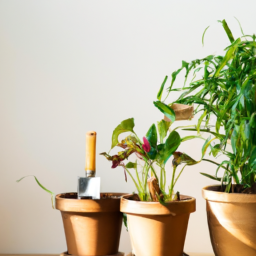
Tips for Successfully Growing Indoor Plants
Welcome to the wonderful world of indoor gardening! Growing plants indoors can be a rewarding and therapeutic experience. Whether you are a seasoned plant enthusiast or a beginner looking to add some greenery to your home, these tips will help you successfully grow indoor plants.
Choose the Right Plants for Your Space
Before you start your indoor plant journey, it’s important to consider the environment in which your plants will be growing. Different plants have different light, temperature, and humidity requirements, so it’s essential to choose plants that will thrive in your space. Some popular indoor plants that are relatively easy to care for include pothos, spider plants, and peace lilies.
When selecting plants, take into account the amount of natural light your space receives. If you have a sunny window, you can choose plants that require bright, indirect light. If your space is on the darker side, opt for plants that can thrive in low light conditions, such as snake plants or ZZ plants.
In addition to light requirements, consider the temperature and humidity levels in your home. Most indoor plants prefer temperatures between 60-75°F and humidity levels of around 50-60%. You can increase humidity by misting your plants or placing a humidifier nearby.
Provide Proper Care and Maintenance
Once you have selected the right plants for your space, it’s important to provide them with proper care and maintenance to ensure they thrive. Watering is one of the most critical aspects of plant care. Overwatering can lead to root rot, while underwatering can cause wilting and stunted growth. It’s essential to water your plants when the top inch of soil is dry, and make sure to drain any excess water from the saucer to prevent waterlogged roots.
In addition to watering, it’s essential to regularly fertilize your indoor plants to provide them with the necessary nutrients for growth. You can use a balanced liquid fertilizer once a month during the growing season to keep your plants healthy and vibrant.
Lastly, proper grooming and maintenance are crucial for the overall health of your plants. Remove any yellowing or dead leaves, prune overgrown stems, and dust the leaves regularly to ensure your plants can photosynthesize efficiently.
Troubleshooting Common Plant Problems
Even with the best care, indoor plants can sometimes face issues such as pests, diseases, or environmental stress. It’s essential to keep an eye on your plants and address any problems promptly to prevent them from spreading. Common pests that can affect indoor plants include spider mites, mealybugs, and aphids. You can treat these pests by spraying your plants with insecticidal soap or neem oil.
If you notice any signs of disease, such as mold, mildew, or leaf spots, isolate the affected plant to prevent the spread to other plants. You can treat fungal diseases with a fungicide spray or by improving air circulation around the plant. Environmental stressors such as temperature fluctuations or low humidity can also impact plant health. Make sure to adjust the conditions in your space to provide a more suitable environment for your plants.
By following these tips and guidelines, you can successfully grow indoor plants and create a lush and vibrant indoor garden. Remember to be patient and observant, as each plant has its unique needs and preferences. Happy growing!
Here are the Essential Points
Indoor plants are a great way to bring a touch of nature into your home, and they offer numerous benefits for both your physical and mental well-being. Not only do indoor plants help purify the air by removing toxins and releasing oxygen, but they also have been shown to reduce stress and improve mood. With a wide variety of plants to choose from, there is sure to be one that fits your space and lifestyle.
When it comes to growing indoor plants, there are a few key factors to consider to ensure their success. First, make sure to choose plants that are well-suited for the lighting conditions in your home. Some plants thrive in bright, direct sunlight, while others prefer lower light levels. Additionally, be sure to water your plants regularly, but be careful not to overwater as this can lead to root rot. Finally, consider using a quality potting mix and fertilizing your plants periodically to help them thrive. With a little care and attention, you can enjoy the beauty and benefits of indoor plants in your home year-round.
Common Questions and Answers:
Q1. What are some easy-to-care-for indoor plants for beginners?
A1. If you’re new to indoor gardening, some easy-to-care-for plants include pothos, snake plants, spider plants, and peace lilies. These plants require minimal maintenance and are great for beginners.
Q2. How often should I water my indoor plants?
A2. The frequency of watering your indoor plants depends on the type of plant and its specific needs. It’s important to check the soil moisture before watering to avoid overwatering, which can lead to root rot. Generally, most indoor plants prefer to dry out slightly between waterings.
Q3. What are some tips for ensuring my indoor plants get enough sunlight?
A3. To ensure your indoor plants get enough sunlight, place them near a window that receives bright, indirect light. Rotate your plants regularly to ensure all sides receive sunlight evenly. If your plants aren’t getting enough light, consider supplementing with a grow light.
Q4. How can I prevent pests from infesting my indoor plants?
A4. To prevent pests from infesting your indoor plants, regularly inspect your plants for any signs of pests such as webs, holes, or sticky residue. Keep your plants clean by wiping the leaves with a damp cloth and avoid overwatering, which can attract pests. If you do notice pests, treat them promptly with insecticidal soap or neem oil.
Q5. What are some benefits of growing indoor plants?
A5. Growing indoor plants not only adds beauty to your living space but also has numerous benefits. Indoor plants can improve air quality, reduce stress levels, boost mood, and increase productivity. Additionally, caring for plants can be a rewarding and therapeutic hobby.
Dr. Olivia Green is a botanist with over two decades of experience in indoor plant cultivation. She holds a Ph.D. in Plant Biology and has dedicated her career to researching plant behavior in controlled environments. Dr. Green is passionate about helping plant enthusiasts master the art of indoor gardening through her extensive knowledge and practical insights.

